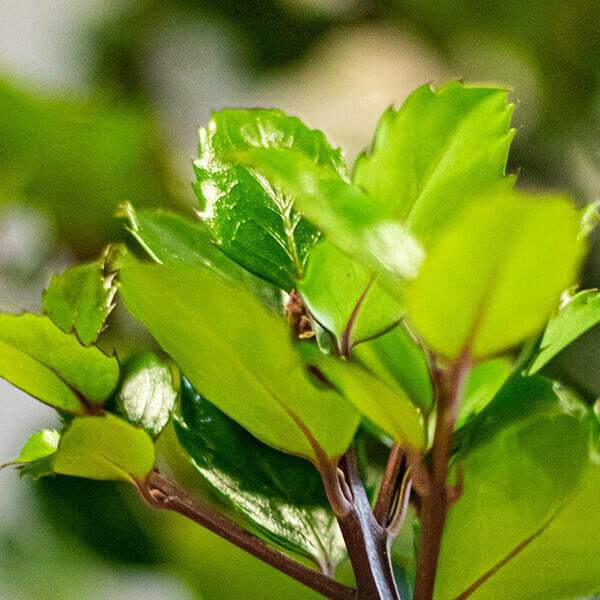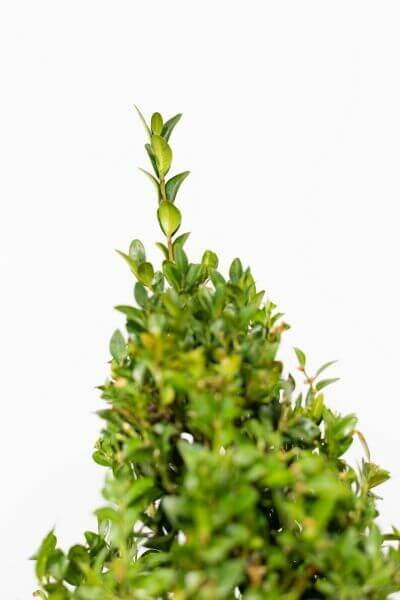Hedge Plants For Creative Landscaping
Hedge Plants For Creative Landscaping
Blog Article
Best Hedging Plants For Quick Results
Enhance your garden's appeal with rich hedge varieties such as Yew (Taxus), Thuja, Laurel, Photinia, and Bamboo, commemorated for their structural integrity and ecological benefits.
Yew and Thuja provide evergreen protection and winter season strength, while Laurel offers fast development and broad, fragrant leaves.
Photinia adds seasonal beauty with its vibrant red foliage, and Bamboo lends a low-maintenance, tranquil atmosphere.
These hedges improve air quality, minimize sound, and create tranquil, private areas.
Correct planting, spacing, and maintenance guarantee energetic development and eco-friendly harmony.
Explore how these rich ranges can raise your garden's beauty and well-being.
Secret Takeaways
Change Your Garden With Lush Hedge Ranges
- Select Yew for its dense, evergreen growth and exceptional durability.
- Go with Laurel for its fast growth and broad leaves, guaranteeing quick personal privacy.
- Select Photinia for its lively seasonal foliage, which turns a striking dark red.
- Make use of Bamboo for a low-maintenance, winter-hardy hedge with aesthetic appeal.
- Space plants 2-3 per meter and prune routinely for ideal development and health.
Popular Hedge Plants
When transforming a garden with lush hedge varieties, it's important to consider popular hedge plants such as Yew, Thuja, Laurel, and Photinia due to their distinct attributes and benefits.
Yew (Taxus) is highly respected for its longevity and dense, green growth, making it a prime option for sustaining landscapes.
Thuja is noted for its evergreen foliage and robust winter season resilience.
Photinia adds seasonal vibrancy with red leaves that darken in time, creating vibrant visual appeal.
Laurel provides fast growth and fragrant, broad leaves, ideal for quick privacy.
Additionally, Bamboo is an excellent option for atmosphere, providing a low-maintenance, winter-hardy choice that enhances the garden's aesthetic with its classy, swaying walking canes.
These choices accommodate a variety of horticultural needs and preferences.
Advantages of Garden Hedges
Garden hedges provide a wide variety of benefits, making them a valuable addition to any landscape. These natural barriers are cost-efficient to execute and provide substantial wind security, enhancing air circulation and adding to noise decrease. The thick foliage of hedges like Thuja and Beech ensures personal privacy by obstructing visibility, developing a peaceful and remote environment.
Hedges likewise play a vital function in microclimate policy, supplying a steady environment that fosters plant development and lessens temperature variations. Their complex leaf structures filter pollutants, enhancing air quality and contributing to a much healthier garden ecosystem.
Furthermore, hedges excel in noise decrease, taking in and deflecting acoustic waves to lower ambient noise levels. This double functionality of offering both visual and acoustic personal privacy enhances the total tranquility and visual appeal of any garden.
Planting and Maintenance Tips
For an effective hedge, careful preparation of the planting area is important. Make sure the soil has proper pH and drain to support strong root advancement.
Space the plants properly for the chosen species. Water the hedge regularly throughout its initial growth stage, changing as needed with seasonal changes.
Execute a systematic insect control and illness avoidance method, using chemical or natural treatments when essential. Regularly inspect for aphids, mites, and fungal infections.
Apply mulch to keep wetness and suppress weeds. Seasonal pruning promotes dense development and air blood circulation, necessary for plant health.
Following these guidelines will help you cultivate a vibrant, well-kept hedge that boosts the appeal of your garden.
Spacing and Cutting Standards
Spacing and Trimming Guidelines
Proper spacing and trimming are essential for cultivating healthy, visually appealing hedges. Sufficient spacing guarantees each plant receives sufficient nutrients, light, and airflow.
Follow these guidelines for optimal hedge maintenance:
- Spacing: Position hedge plants 2-3 plants per meter to encourage robust development.
- Pruning Strategies: Routine pruning is necessary for keeping preferred hedge height and shape. Cut new growth in summer and cut back older wood during winter season.
- Seasonal Care: Change trimming schedules and methods according to seasonal requirements to make sure plant health.
- Hedge Height: Frequently screen and trim to preserve the desired hedge height and achieve consistent visual appeals.
Complying with these steps will ensure your hedge prospers, improving both the appeal and performance of your garden.
Choosing the Right Hedge
Choosing the Right Hedge
Picking the proper hedge involves assessing elements such as fully grown height, foliage density, and environmental strength. Effective hedge plant selection requires comprehending each species' growth attributes and site-specific versatility.
For example, Yew (Taxus) provides excellent durability and dense development, while Thuja is noteworthy for its winter season strength. Additionally, thinking about maintenance requirements is vital; fast-growing types like Laurel or Privet demand routine cutting, whereas low-maintenance choices like Bamboo or Ivy might be more suitable for those seeking very little upkeep.
Ecological elements such as soil type, light availability, and moisture conditions should also direct the choice process. This mindful approach guarantees the picked hedges will flourish, providing both functional and visual advantages to the garden landscape.
Shipment and Planting Guidance
To guarantee your hedge plants prosper, they ought to be provided by specialized couriers and planted without delay upon arrival.
Follow these necessary actions for effective planting:
- Soil Preparation: Enhance the soil with raw material to improve drain and nutrient material.
- Planting Depth: Produce a trench twice the width and equal to the depth of the root ball.
- Watering Methods: Water thoroughly after planting, keeping the soil consistently moist however not saturated.
- Mulching: Use a layer of mulch to maintain wetness and suppress weeds.
Customer Assistance and Service
Provided the essential role of timely help in horticultural pursuits, our client support group is offered six days a week through telephone, e-mail, and social media to offer skilled advice and promptly deal with any issues. Their commitment to fast reaction times makes sure client satisfaction by fixing queries connected to plant health, ideal planting approaches, and maintenance schedules.

Communication Method
6 days a week
Within 24 hours
This detailed support group, enhanced by an excellent 9.3/ 10 client rating, highlights our dedication to improving the gardening experience for every customer.
Frequently Asked Concerns
How Long Does It Consider Hedge Plants to Establish?
Hedge plants normally require one to 3 years to become fully developed, with the exact period differing by species and growing conditions.
Reliable care during this vital period is vital for robust development. Consistent watering, watchful weed control, and appropriate fertilizer application are critical in promoting strong root advancement.
For instance, fast-growing types like Laurel may establish quicker, while slower-growing varieties such as Yew might take longer. Thorough maintenance accelerates the facility procedure, leading to healthy and dense hedges.
What Are the very best Hedge Plants for Personal Privacy?
The question of the very best hedge plants for personal privacy includes evaluating evergreen and deciduous options.
Evergreen hedges like Thuja, Laurel, and Cypress offer year-round protection, making sure continuous privacy.
In contrast, deciduous hedges such as Beech provide seasonal personal privacy, shedding leaves in cooler months.
Secret upkeep pointers for privacy hedges include regular trimming, fertilizing in spring, and appropriate spacing-- usually 2 to 3 plants per meter.
Furthermore, constant watering and persistent weed removal are important for promoting healthy, dense growth.
Can Hedge Plants Attract Wildlife to My Garden?
Yes, hedge plants can attract wildlife to your garden by providing important advantages like shelter, food, and nesting sites, thus boosting local biodiversity. Yew, holly, and laurel are exceptional for drawing in birds, while ivy supports a range of insects.
Nevertheless, it is essential to note that there are some disadvantages, such as increased maintenance to manage bugs and regular maintenance. Thoroughly choosing and keeping hedge ranges can assist balance these benefits and downsides, eventually fostering a sustainable and lively ecosystem in your garden.
Exist Any Blooming Hedge Plants Available?
Yes, there are flowering hedge plants available that can improve the appeal of your garden.
For example, Elaeagnus, also referred to as Olive Willow, produces aromatic white flowers in the fall, including a touch of elegance.
Photinia, another popular choice, showcases dynamic red leaves that mature into a rich green, creating a vibrant visual result throughout the seasons.
To ensure these plants flourish, it's necessary to practice correct pruning techniques and seasonal upkeep, such as trimming brand-new development in the summertime and cutting down in the winter season.
These measures will help preserve the health and visual appeal of your blooming hedges.
How Do I Avoid Pests in My Hedge Plants?
To prevent insects in hedge plants, use natural bug control approaches and maintain proper hedge care. Introduce useful pests like ladybugs, which prey on harmful pests, to create a balanced environment.
Regularly inspect your hedges for signs of infestation and immediately remove any affected parts to prevent the spread. Ensure the health of your hedges by using well balanced fertilizers and supplying appropriate water.
Use mulching to keep soil moisture and proper spacing to reduce plant tension and promote robust development. These practices jointly help in reducing pest concerns and keeping a healthy hedge.
Conclusion
In essence, selecting the right hedge ranges such as Yew, Thuja, and Laurel can change any garden into more info a peaceful haven. These plants supply year-round greenery, enhance visual appeal, and deal practical advantages like noise reduction and wind defense.
Appropriate planting techniques, accurate spacing, consistent watering, and seasonal cutting are important for optimum development.
Trustworthy delivery services and skilled client assistance guarantee a seamless experience from purchase to planting, making it simpler than ever to raise your outdoor area.
Garden hedges offer a plethora of benefits, making them an important addition to any landscape. These natural barriers are affordable to carry out and offer substantial wind security, boosting air blood circulation and contributing to noise decrease. The dense foliage of hedges like Thuja and Beech guarantees privacy by obstructing presence, creating a tranquil and secluded environment.

Pruning Strategies: Regular pruning is important for maintaining wanted hedge height and shape. Trim brand-new development in summer and cut back older wood throughout winter season.
Report this page